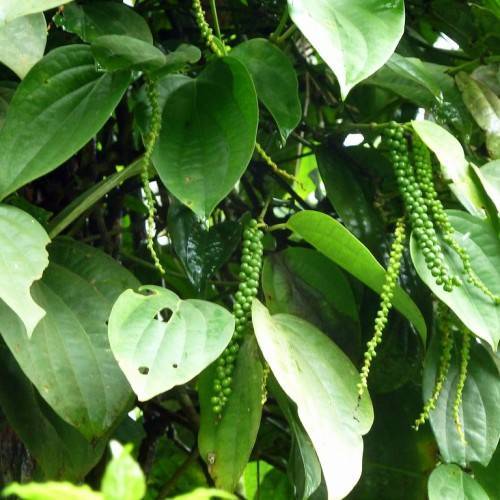
common pepper
Piper nigrum
Cycle:
Perennial
Watering:
Average
Hardiness Zone:
12
Flowers:
Flowers
Sun:
Part shade
Fruits:
Fruits Ready In Summer
Leaf:
Yes
Growth Rate:
Low
Maintenance:
Moderate
Salt Tolerant:
Yes
Care Level:
Medium
watering
Generally, common pepper plants should be watered 2 to 3 times per week. Watering should take place in the morning to help avoid mildew and root rot and it should evenly soak the soil to a depth of at least 10 inches. The soil should remain damp to the touch but not overly saturated. Letting the soil dry out slightly between watering will help to keep the roots healthy. During periods of dry weather, you may need to water more frequently. Feel the soil with your fingers to determine its moisture level. If it is dry, water thoroughly. When growth slows in cold winter months, reduce watering to once per week.
sunlight
Common pepper (Piper nigrum) require 6 to 8 hours of sunlight per day. For best results, place the pepper plants in an area that will receive direct sunlight for most of the day. These plants prefer full sun for the majority of the day, but it’s beneficial to give the plants some protection from the hottest midday sunlight. Pepper plants do best in temperatures over 65°F (18°C). The ideal temperature range for pepper plants is between 65–85°F (18–29°C).
pruning
Common pepper plants (Piper nigrum) should be pruned at least once per growing season (spring/summer) to promote health and vigorous growth. Pruning should be minimal and focus on removing dead, damaged, and weak growth. To prune, simply cut back any dead or damaged main stems to the next healthy leaf node, and remove any unhealthy stems or leaves. Pruning will help the plant put energy into producing new shoots, as well as encourage more branches to form, creating a fuller, bushier shape. However, be careful not to over-prune the plant as this can lead to inadequate production of fruits and decrease in overall vigor. Proper care should also be taken to ensure the pruning is done in a way that the shape of the plant’s canopy remains unaltered.
